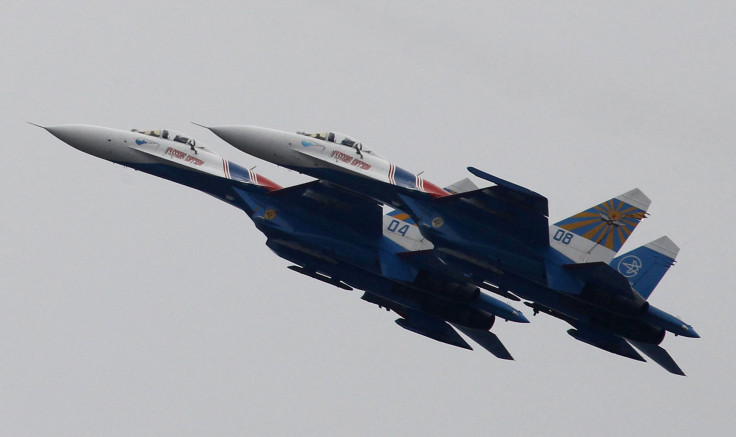Russia's Cold War Tactics: A Map Of Where Russian Planes Are Probing Air Defenses

Revelations that Russia will recommence Cold-War style long-range bomber flight deployments to the Gulf of Mexico and the Caribbean are likely to further strain relations between Moscow and the United States. The announcement that the flights will begin again 20 years after they ended with the collapse of the USSR adds to the dozens of sorties that Russian planes have completed all across Europe in the last nine months. As happened during the Cold War, bombers or reconnaissance planes fly close to a Western country's airspace; the local air force scrambles fighter jets to intercept the plane; the Russians never enter the actual country, but the potential for armed confrontation remains high.
The tension is further underlined by Russian incursions into Ukraine Wednesday.
While these aggressive tactics from Russia are believed by many to be a diplomatic ploy, they are still cause for alarm, said Sarah Lain, a research fellow with expertise in Russia at the Royal United Services Institute in London.
“I think it’s definitely of concern,” Lain said. “Because although Russia has the right to operate in international air space, the fact that they’ve ramped it up so much to now expanding itself outside of Europe is significant, because it really shows how this whole NATO expansion threat is a real danger to Russia.”
But Lain doesn’t believe that the intensity of the Russian operation can last.
“Russia definitely knows the symbolic nature of restarting things as they were in the Cold War,” said Lain. “But all this military buildup, while not overtly attacking, is not really sustainable in the long term with regard to costs. The finance minister of Russia came out with the last budget saying the remilitarization and rearmament of Russian forces isn’t affordable, particularly given what has happened with oil prices.”
However, the sorties, which have increased intensely since August, show little signs of ending anytime soon. But more than just aerial aggression, Russia has used submarines and even one instance of kidnapping.
The first high-risk incident was in March, when a Russian reconnaissance aircraft nearly collided with a SAS passenger plane on its way from Copenhagen to Rome.
Another high-risk incident took place in September when an Estonian security service operative was kidnapped by Russian agents from an Estonian border post, which is in NATO territory. The agent was taken to Moscow for questioning.
The third instance of an event that could have led to an escalation of force was the hunt for was believed to be a Russian submarine off the coast of Sweden in Stockholm’s archipelago, last month.
In between those incidents there have been more 30 different examples of Cold War-like behavior from Russia. Between Oct. 28 and Oct. 30, for instance, more than 20 Russian aircraft were spotted over the North Sea, Black Sea, Atlantic Ocean and Baltic Sea.
Below is an interactive map showing the full scale of Russian aggression over the last nine months.
© Copyright IBTimes 2024. All rights reserved.






















